'The use of military power to settle disputes is not always preferred and is the last preferred option, but it certainly remains an option.'

"The Army is not only capable, but has the capacity to defend its entire territory. Our troops are very hardy, well-trained and completely acclimatised for high-altitude warfare in winters,", Lieutenant General P J S Pannu (retd) -- who served as General Officer Commanding of the Leh-based XIV Corps -- explains to Rediff.com's Archana Masih.
China has once again carried out provocative military action in the Pangong Tso lake area. Do you feel the PLA is going to continue transgressions along the Line of Actual Control?
The PLA has taken initiative to break the status quo to their favour. The Indian and Chinese military commanders have met several times to achieve status quo ante to return to the pre-April positions.
In certain areas such as Galwan, some readjustment has happened to separate the positions of the two militaries, but the Chinese have not gone back in Pangong Tso, Ghagra, Hot Spring and are quite close to Depsang.
All these incidents have happened north of Pangong Tso.
Yesterday's incursion took place in a new area - which is south of Pangong Tso. The earlier activities took place in the north and fall under a different command of the China division. To my understanding there are two Chinese commanders in that area -- in-charge of the north and south respectively.
The border post meetings between India and China take place in Chushul which is in our area and Maldo which is theirs. The two posts are very close to each other.
This is not an area where any active hostilities or proximity was reported.
In South Pangong Tso, the Chinese troops are located on one side of the heights and Indian troops are on heights on the other side. There is a bowl in between the two locations next to the lake.
While I do not exactly know where the incursion has happened, but the Chinese have tried to intrude into the bowl even earlier many times and have been stopped by the Indian Army. We have had face offs in that area resulting in pushing-pulling etc.
I think in the north of Pangong Tso, the troops have almost achieved eyeball-to-eyeball or shoulder-to-shoulder deployments. Therefore, there is very little chance of manoeuvre to open any fresh areas in the north of Pangong Tso.
Maybe the Indian Army has also undertaken certain activities to readjust their positions in a manner where they have an advantage over the Chinese which made the Chinese feel the need to open up a new area.
To do this the Chinese will look for a place where Indian troops are not physically present like the bowl which is next to the water dominated by heights from both sides.
If the Chinese have come in that side, they can't remain there because Indian troops positioned on the dominating heights will quickly react as is being reported and would have stabilised the ground situation.
Seeing the Chinese belligerence, do you think we're likely to see more of these incursions along the LAC?
The idea behind making the first movement is to get into certain locations where they are in a position of disadvantage.
Whenever a scuffle happens, the forces do tend to take this opportunity to improve their defensive posture or go into certain areas where they have a better visibility or better domination.
Sometimes even junior commanders start taking liberties into these areas to improve their own position which otherwise is very tightly controlled.
Such advantages are taken from both sides and I don't deny that our troops would have taken those advantages too.
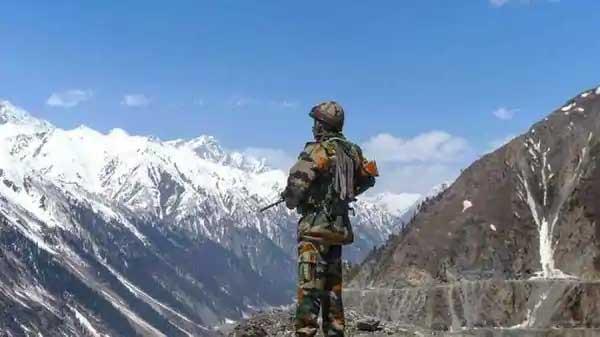
How do you see this increased tension affecting the already heightened situation on the ground?
As far as yesterday's action is concerned, I don't think it would give them an advantage tactically or operationally, but it will reinforce the belief that the Chinese are known to break trust.
They have disregarded all the past protocols between the two sides to not to alter the status quo unilaterally.
The side that breaks those protocols would also be branded as untrustworthy. The PLA must be under pressure from their own political authorities to push around in these areas and show more achievement.
I also would not put it past against the Chinese divisional commander in the south having taken the action because he felt left out in front of a proactive counterpart. Such an action could also be a result of competition between the two commanders.
This will now result in the Indian side reinforcing their positions.
Like you said that we are already shoulder to shoulder in the north, so will there be a similar build-up now in the south as well?
I would not put it past our own troops to have already gone into certain areas to provide an advantage to our side and to ensure that no such leeway is permitted to the other side.
This could result in more deployment in this area to make it more rigid. The LAC was always flexible in areas where patrols would move around and there were no fixed positions, but this could get more fixated now which is not very conducive for the overall peace, security and tranquility of the area.

How strategic is that area around Pangong Tso lake? If the Chinese continue to intrude is there a possibility that they can cut off Chushul valley to our troops?
That assumption is not entirely wrong, but is also not entirely correct.
The Chinese would want to go into the heights from where they can dominate areas which would make the approaches to the Chushul area visible to them.
But to actually go into those positions, they have to move a lot forces which would mean that the Indian military would also harden its positions.
What is the strategic importance of the Pangong Lake?
Two-thirds of this lake is under Chinese control and one third is in India's. This lake separates the north and south divisions of the Chinese forces.
It makes the switching of forces between the north and the south more difficult because the lake causes an impediment to the movement of troops.
Moreover, both sides have military boats in the water which act as a water highway for quick movement up and down.

How is the Indian Army prepared to deal with any further escalation especially in the coming winter months?
The Indian Army is fully prepared. Four months would have given the Indian Army enough time for a larger action.
The Army is not only capable, but has the capacity to defend its entire territory. Our troops are very hardy, well-trained and completely acclimatised for high-altitude warfare in winters.
It is not going to be a cakewalk for the Chinese. I understand the capacity of the Indian Army and I also understand the area, I know we will not be at any disadvantage.
What is the possibility of the situation escalating further? Some say that a limited war is not unlikely?
The military is an extension of the political resolve. If the two countries cannot solve the problem politically and diplomatically through negotiated peaceful settlement, then the military is there to play its role if the political hierarchy feels it is necessary.
The use of military power to settle disputes is not always preferred and is the last preferred option, but it certainly remains an option.
Feature Presentation: Aslam Hunani/Rediff.com
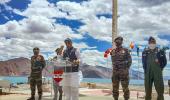

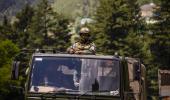






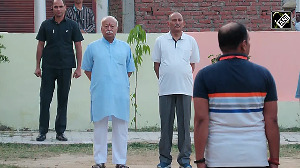
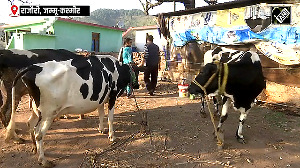
 © 2025
© 2025